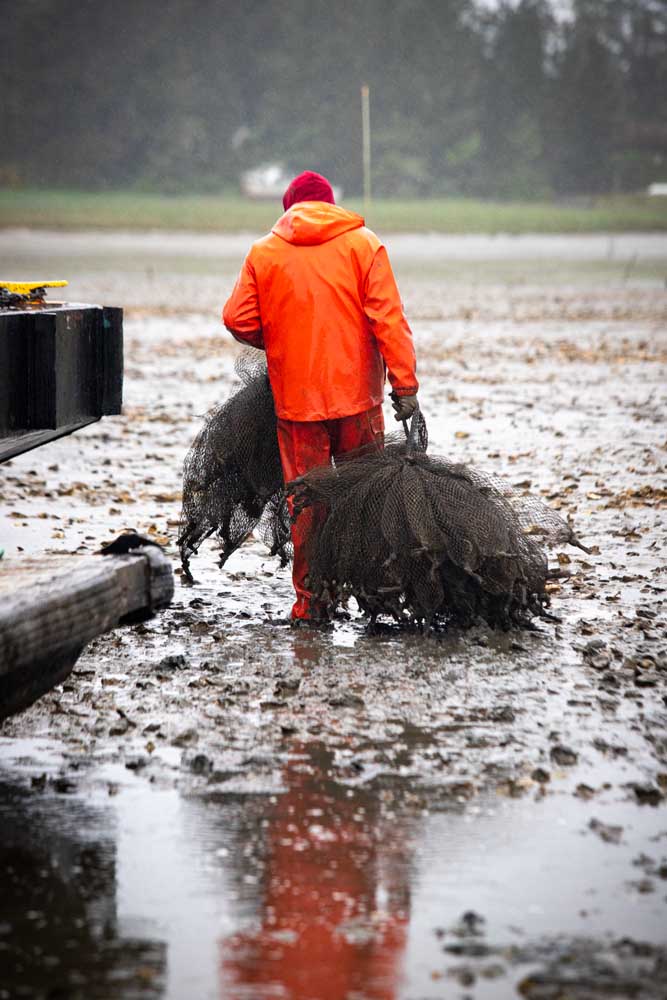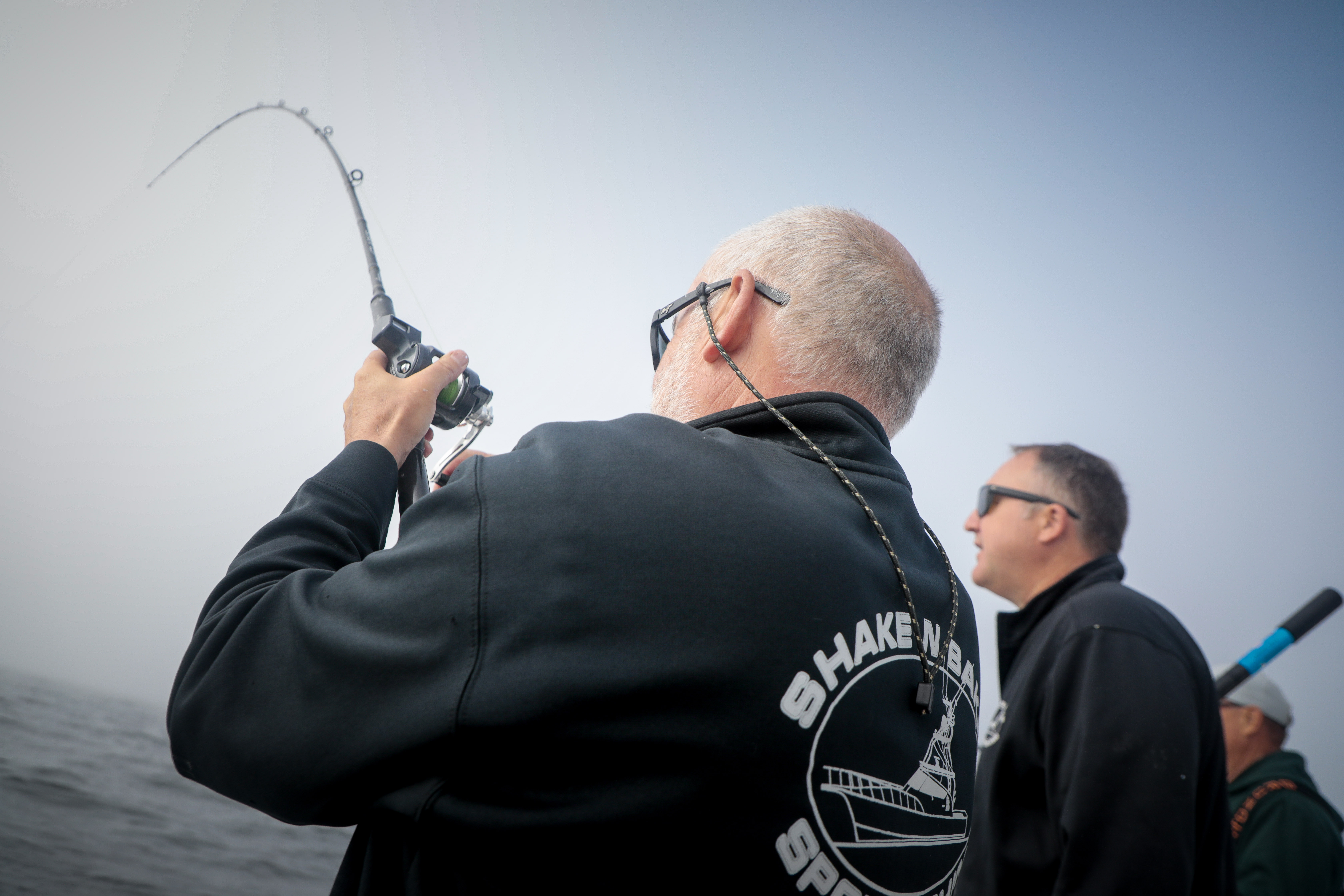Through rain, silt and oyster spat: Seasonal oyster crews serve essential role
Published 7:16 pm Wednesday, May 26, 2021

- A shellfish farmer carries away empty cultch bags.
NAHCOTTA — A dull hum echoed from a silhouette on the distant tide flats before sunrise on a late-May morning in Nahcotta.
Trending
As the sun rose, dozens of shellfish farm workers emerged from the mist, each dressed in rubber boots and bibs as they toiled in a driving rain at low tide to help cultivate a future crop of Willapa Bay oysters.
The workers, a mix of full-time oyster farmers and seasonal seed crew, were employed by Pacific Seafood to fulfill an essential step in maintaining Willapa Bay’s aquaculture abundance, which overall accounts for about a quarter of the U.S. total.
The workers were busy gathering mesh cultch bags, each filled with shells holding oyster larvae, also known as spat.
Trending
Workers passed the bags of baby oysters hand-to-hand with the last handler cutting the bag open and dropping the young oysters onto a conveyor belt that carried the tiny mollusks onto an awaiting barge.
From there, the oysters are taken to ideal growing spots in Willapa Bay and spread along the bottom, areas conducive to growing a “richer and fatter” seed oyster. The oysters grow and mature over about two years into dense clusters before being separated for final fattening and harvest.
Pacific Seafood, headquartered in Clackamas, Oregon, and a dominant force in the Pacific Northwest fish and shellfish industry, acquired Coast Seafoods Company of South Bend in 2011, thus gaining a significant foothold on Willapa Bay.









